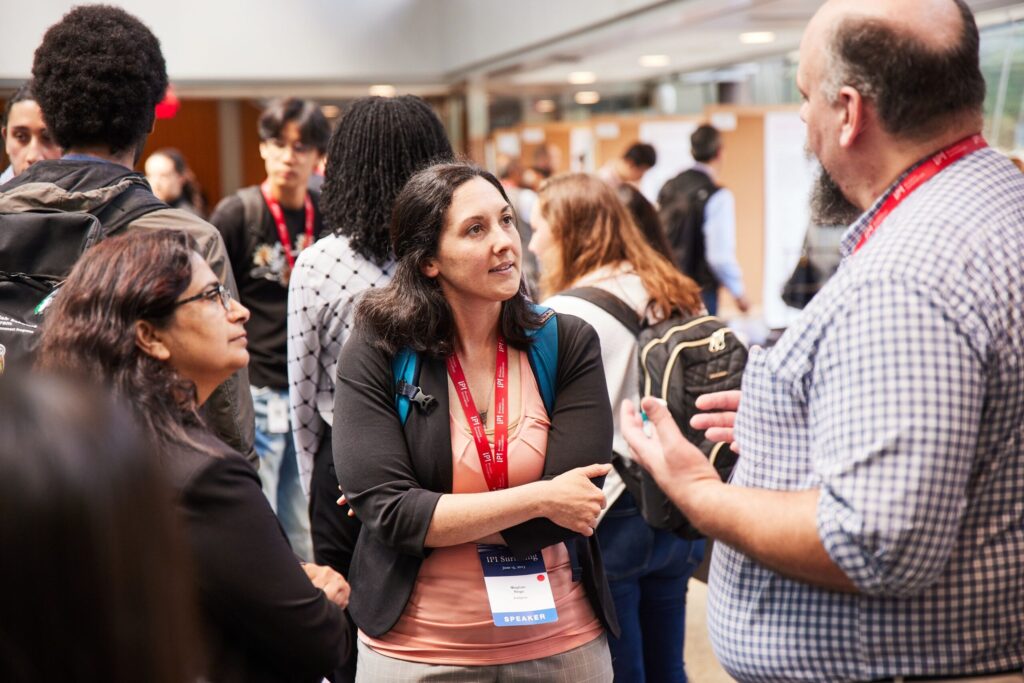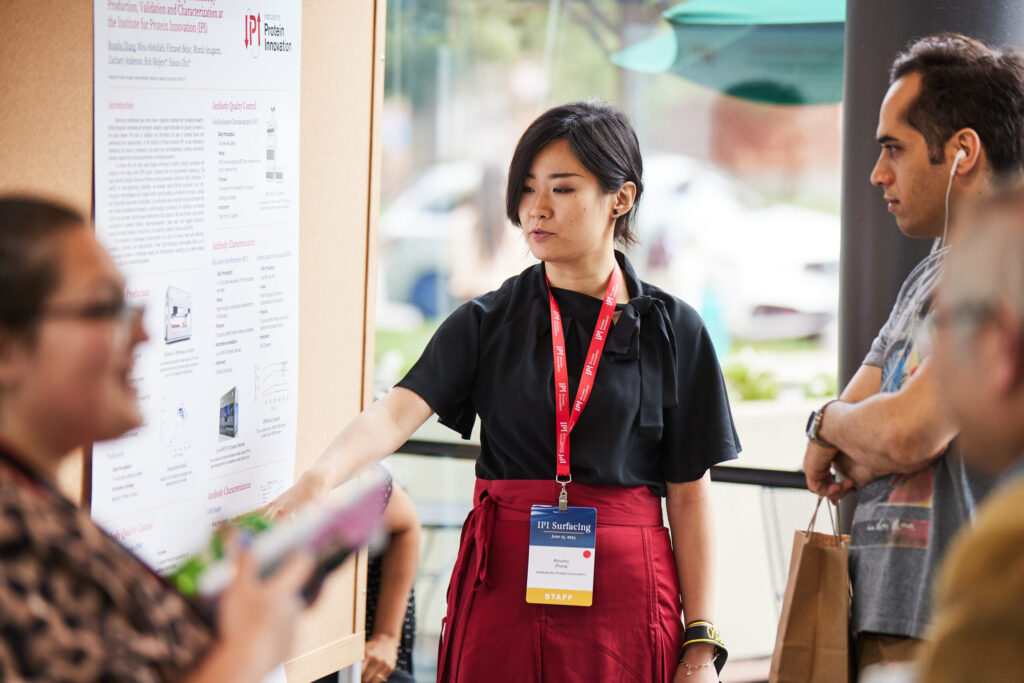In a perfect world, antibody reagents would be reliable. Their protein sequences would be accessible. Application testing would have been conducted before sales. And protein tools would be affordable, proffered in a reproducible supply for endless experimentation.
But, according to a panel discussion at IPI Surfacing, a cell surface receptor and protein biology symposium hosted by the Institute for Protein Innovation (IPI), scientists will need to keep dreaming — or finally commit to finding solutions.
“More than half the antibodies being sold shamelessly don’t work,” said panelist Andreas Plückthun, a professor at the University of Zurich who, alongside a group of respected scientists, roused the biomedical community in 2015 with a call for antibody standardization published in Nature. “For me, as a biochemist, it’s surprising how docile this scientific community is … I think it’s time to clean up.”
Yet the mop-up hasn’t been — and won’t be — easy. That is, unless the scientific community can once again come together.
“It’ll take a village to really get this going,” said panelist Rob Meijers, director of IPI’s Antibody Platform. “I think there’s a lot of improvement … that we can and still need to do.”
Enhancing transparency
The antibody reagent market, which services basic research and drug discovery, is notoriously opaque, with little protein sequence, assay application and protocol information conveyed upon purchase.
In many instances, “when you buy an antibody, you get a black box. You have no idea what you’re using,” Meghan Rego, director of antibodies at nonprofit biorepository Addgene, said in the discussion. “It blows our mind that researchers are expected to spend all this money on tools, and they really don’t know what they’re using.”
Addgene strives to provide transparency around the DNA-based tools in their repository, including sharing plasmid maps and sequences while providing user support. In 2022, the two-decades-old organization launched its ready-to-use antibody services and, in June 2023, announced its partnership with IPI to distribute sets of recombinant antibodies accompanied by full disclosure of their amino acid sequences.
When you buy an antibody, you get a black box. You have no idea what you’re using.
But beyond the IPI-Addgene partnership and other small-scale efforts, data sharing around commercial antibodies is typically scant. One major obstacle is the cost and effort required to collect evidence of an antibody’s performance in specific research assays.
Many commercial vendors simply skip the validation step before putting antibodies in sales catalogs, relying instead on post-market publication and citation to prove an antibody’s merit. One method to increase transparency is to encourage the use of shared data repositories, into which researchers can upload validation data or report results. The outcomes of such crowdsourcing, however, are mixed. Addgene, for example, has created a Data Hub for its viral vector usage and has at times even offered gift cards and discounts to incentivize scientists to participate.
“The most difficult part is the activation energy,” Rego said. “Just trying to get people to take the time … is really difficult.”
Another solution, proposed by Meijers and echoed by Andrew Kruse, cofounder of IPI and a professor of biological chemistry and molecular pharmacology at Harvard Medical School, hinges on community engagement.
“A way that you can really enhance the user experience and utility of these reagents,” Kruse said, “is to build communities of users around particular antibodies and particular tools … and connect them to one another so they can share positive and negative experiences and experimental protocols, details and so forth.”
But encouraging data sharing is only a fraction of the solution.
Changing the status quo
Panelist Aled Edwards, a professor at the University of Toronto and founder of the Structural Genomics Consortium (SGC), has spent years trying to improve reproducibility around protein tools. With the SGC, Edwards tested hundreds of antibodies appearing in published papers and found that 22% worked no differently than controls. Though commercial sellers pulled some of the apparent duds from their sales catalogs or changed recommended usage, Edwards said that demand for the antibody lemons remained surprisingly strong.
“Professors still wanted them,” he said. “No joke.”
It may be that the academics didn’t know about the recall or revisions. More likely, Edwards said, there is a cultural element to overcome. In an academic system that prioritizes obtaining grants and publishing papers, scientists often choose the quickest path through peer review, even if the quality of experimental tools turns out later to be dubious.
“This is a super cool problem of scientific sociology,” he said.
Quality and cost
To address the problem and motivate a culture shift, a number of formal and informal groups have emerged to try to standardize antibody quality, provide validation guidelines and share data, including the European Monoclonal Antibodies Network, the International Working Group for Antibody Validation and YCharOS, a Canadian open science company founded by Edwards. The experience of the structural biology community may offer a useful model. Regulatory agencies including the US National Institutes of Health (NIH), and select journals, now require researchers to deposit their 3D structure data in the Protein Data Bank for communal use.
But panelists pointed out that the effort to regulate quality criteria or place requirements on publication does not unravel the complexity that comes in mandating any sort of standards.
Plückthun told the story of a backlash from the immunology and medical communities that occurred when the Swiss Science Council attempted to enforce antibody quality criteria. Those researchers fought back, he said, demanding access to antibodies linked to poor performance data. Scientists have “different backgrounds and expectations” for reagents across fields, he summed.
The question of who should take responsibility for antibody standardization and validation is a complicated one. If one expects researchers to conduct quality control experiments for commercial antibodies, the vendors profit off the hard work of academics. The onus should lie with the antibody provider, Plückthun said — but this raises the issue of the financial viability of a well-validated reagent antibody market.
At Alloy Therapeutics, founder and CEO Errik Anderson is trying to drive costs down by investing revenue back into innovation, but “we’re threading this needle,” he said as part of the panel. “You’ve got to make at least a dollar of profit.”
With enough leads, some reagent antibodies might make their way into therapeutics, suggested Ken Fasman, IPI’s president and CEO, who moderated the panel. Those might help subsidize the costs of the other reagents. But that blockbuster solution could pull a reagent provider into an eventual conflict of interest, according to Plückthun.
Instead, ever-improving synthetic antibody discovery platforms and high-throughput automation may increase efficiency enough to combat costs, according to Kruse; this was one of the principles behind founding IPI. Another tactic, pairing platform efficiency with a nonprofit model — like that of IPI — may offer a way forward.
“We actually have an opportunity to really do this sort of thing at a scale that hasn’t been practical before,” Kruse said.
Call for collaboration
The alarm bells have been ringing for decades — so long, in fact, that many ears are now deafened to them. And still the antibody reproducibility crisis continues, a ball and chain on the scientific enterprise’s advancement and innovation. Because the problems are multifaceted, the solutions will only come through comprehensive, collaborative efforts, the panel concluded.
“Investments in shared infrastructure,” Anderson proposed.
“Transparency. Any data … any limitations that you know the tool has should be made available to people,” Rego added.
“Offer grants to help incentivize collaboration,” Fasman said.
Companies might share research antibodies with nonprofits like Addgene for wide distribution, Anderson suggested. And, according to Kruse, sustainable, philanthropy-funded protein labs might generate quality antibodies without profit constraints.
“This is ultimately a community effort,” Kruse said, “and I think IPI has a big role to play in being a hub for community around better antibodies, better reagent antibody discovery methods, validation methods, characterization data packages and distribution.”
Sources:
Ken Fasman, Rob Meijers, info@proteininnovation.org
Errik Anderson, errik.anderson@alloytx.com
Aled Edwards, aled.edwards@utoronto.ca
Andrew Kruse, Andrew_Kruse@hms.harvard.edu
Andreas Plückthun, plueckthun@bioc.uzh.ch
Meghan Rego, help@addgene.org
Writer:
Caitlin Faulds, caitlin.faulds@proteininnovation.org
Kat McAlpine and Trisha Gura contributed to this story.
About IPI
The Institute for Protein Innovation is pioneering a new approach to scientific discovery and collaboration. As a nonprofit research institute, we provide the biomedical research community with synthetic antibodies and deep protein expertise, empowering scientists to explore fundamental biological processes and pinpoint new targets for therapeutic development. Our mission is to advance protein science to accelerate research and improve human health. For more information, visit proteininnovation.org or follow us on social media, @ipiproteins.







